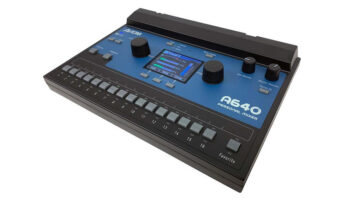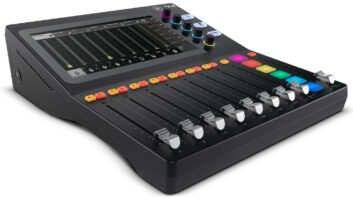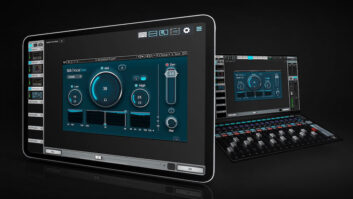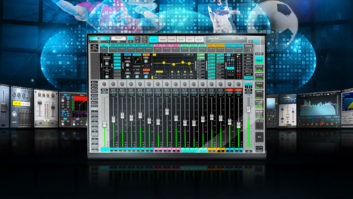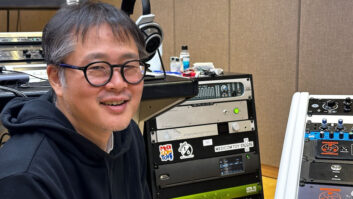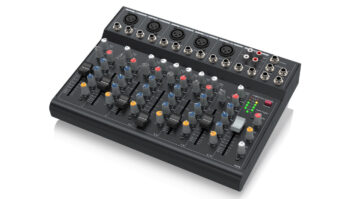by Janice Brown
New York, NY–Sony’s Studio A is a favorite room of NYC-based engineer Jason Goldstein, which is where we met to talk about his latest mixes–for the new Beyoncé album, B-Day, and The Roots’ latest album, Game Theory. No matter what studio he’s working in on a given day, Goldstein resides in the world of pop music, particularly R&B and hip-hop, and is hired for his precision and speed in delivering the pop goods.
Jason Goldstein at Sony Studios in ManhattanTo Goldstein, pop quality is a matter of accessibility, and the job of the mix engineer is to help the record translate well in all the different places it will be heard–club, car, MTV, radio. Naturally, Goldstein’s mixes echo the Quincy Jones’ mantra “outhouse on the bottom and penthouse on the top,” or as Goldstein explains it: “if you turn the song down low, the melody and vocals have to pop through. It has to sound crystal clear on MTV, but it also has to knock at the club, have that heaviness to it.”
The melody, and especially the hook, is everything in pop music, says Goldstein, and pop music is whatever’s serenading the mainstream. “In the grunge era, ‘Smell’s Like Teen Spirit’ was a pop record, and now 50 Cent is a pop artist,” he says. “When Midwestern kids are buying rap albums at Walmart, rap is pop music.”
The pop quality mix is something else, not quite indicative of the pop song, but applied to songs either designed expressly for the mainstream or those less contrived, but still reaching a mainstream audience. Since there is no formula, Goldstein depends on his experience, ears, and trustworthy tools to treat each song appropriately. “I am a firm believer that songs really want to sound a certain way,” says Goldstein, adding that B-Day‘s first single, “Déjà Vu,” for example, “wanted to be an up-tempo R&B joint.”
Working with an abundance of tracks, and in this case live horns, live bass, and lead vocals from both Beyonce and Jay-Z, Goldstein played with the perceived tempo and perceived loudness on drum tracks to get the aggressive, “in your face” kind of pop sound for “Déjà Vu,” while retaining dynamics and achieving a melodic bounciness that, pre-mix, may have sounded theatrical–for the horns–or too bassy in the underlying beat.
“There’s an 808 on that record that you don’t really hear, but you feel, and there was a lot of discussion about it being a lot louder,” says Goldstein. “I actually fought for it not to be because there was a busy bass line and kick drums. A loud 808 would have smeared the record, flattened out the dynamics. What’s great about that song is that it moves and bounces, and all that low-end and sustain would have taken away from that bounce.”
In mixing a song like “Déjà Vu,” Goldstein’s focus is that melody, and in only that respect, it’s a typical gig. “They want you to keep focused on that bounce, whatever it is–that driving force behind the record,” he explains, adding with the ever-present hint of realism in his voice, “my clients, for the most part, don’t want me to experiment. In pop music today, they don’t want panning, flanging, delayed effects added during the mix. Some productions involve cool effects, like Britney Spears’ Toxic, but those effects are part of the production, done well before the mixing stage.”
While this straight-ahead, very clean style seems to come easily to Goldstein, he does not forget his roots, a DJ spinning early hip-hop, and then an engineer coming up at Ocean Way (like a kid in an analog candy store). From time to time, he actually gets to bring the full scope of his skills to a project, as with The Roots’ Game Theory. “The Roots perform their songs live, and they’re so talented, they play the dynamics into the record so you don’t have to manufacture that drama in the mixing process,” notes Goldstein. “They monitor their own volume, get out of each others’ way, which leaves the mixer room to do the fun stuff you don’t often hear on pop records–overdo the reverb in spots and put flangers and phasers and delays that pan. The record’s already there, so you can get creative.”
Since The Roots are hoping to win some of the pop audience with this new album, tapping Goldstein to mix several tracks was strategic, though his approach was hardly formulaic. “The Roots came to me with their single and asked me to do ‘my pop thing,'” says Goldstein. “They wanted the dry, articulated drums and that punchyness, but with vibey songs like theirs, that was like trying to fit a square peg in a round hole. In the end, the song was better off being what it was meant to be. Sometimes you have to let the record run and not force it into a pop sound.” Mixing The Roots is all about capturing the emotion behind each song, which, as Goldstein points out, is delivered lyrically and musically.
“They want these songs to sound like a vibe, so I added reverb to put them in a space, and not volume-wise, but in its intensity and intimacy, you bring Toriq’s vocal out and it’s like the band’s creating a soundscape around him. These songs are melodically and lyrically driven, so in a pop sense, again, that’s my focus. The lyrics are relevant and important, and the band plays to that, plays to what the song is all about.”
Goldstein’s mixing style is also attractive to the labels because it’s no-nonsense; he’s adopted the “mix in a day” mindset to suit the budget conscious. Big-name records, and especially big-name albums tag-teamed by “super producers,” are fast approaching the spending limit by the time they get to mixing. Compounding the time crunch is the prevalent “fix it in the mix” mentality so many tracking engineers operate under, according to Goldstein.
“The majority of the time, when I get into the studio on the first day of a mix session, that’s the first time I’ve heard the record,” shares Goldstein. “Very often I have to spend hours listening to tracks that aren’t labeled, removing all the clicks and pops–there are a lot of home-grown engineers in the R&B and hip-hop world, and they don’t follow any protocol or file hierarchy, there’s no sense that this project is going to be handed off to someone else to mix.”
It’s Goldstein’s humble opinion that consistency is important, where possible. “You could have 5, 6, 7 producers on an album, recording in 5, 6, 7 states, with 20 different engineers on 50 different days, and it’s unfair to expect a mastering engineer to glue that all together at the end,” he points out. “Having one engineer mix the album, even if he’s not as good as a real A-lister, is better than having a bunch of different mixers, because at least there’s continuity there.”
For the Beyonce and Roots albums, Goldstein worked in a few different NYC studios, including Sony, Integrated and Battery. Though familiar with the rooms, he carts around his trusted gear–a rack holding a TC Electronic M3000, 1210; Pendulum Audio 6386 (his go-to compressor); Alan Smart C2 compressor; two Empirical Labs distressors; Manley Massive Passive; Transient Designer and a Finalizer–and a new pair of JBL LSR6300 Series monitors. “These are your ears–you bring them from room to room and that’s the only thing that’s consistent.”
In the near future, Goldstein predicts budgets will constrict even more and the simultaneous tech advances will make mixing in the box a given. “It’s almost like we’re being forced to do it–with budgets being lower and the need for so many recalls and things being produced all over the country, the current process is cost prohibitive. Where will they draw the line? They want me to mix the record in a big studio, but for less than they used to pay, and they want to recall it six times. Well, you have to pay for that-pay the studio and engineer. At least with mixing in the box, engineers can get better results because they’re not as rushed and recalls are so easy they can be figured into the fee.”
As it is, Goldstein mixes on SSLs at the aforementioned studios, but has been using plug-ins more and more. “I do a lot of the background stack EQing in Pro Tools, and I’ve started to do more and more lead vocal EQ and compression with plug-ins,” he says. “I love the URS and Sony Oxford plug-ins. I’ll do all my de-essing, my surgical EQ’ing and a lot more of my general all-purpose work in the box.”
With much love for the console, tactile hardware, and studio environment, however, Goldstein anticipates working in a hybrid ICON-based scenario in the future. Mixing by mouse-clicking removes a lot of the happy accidents that occur via the less accurate knob-twisting and button pushing. “I look forward to mixing in the box when I can retain as much of the randomness and imperfection of analog–to turn of the computer monitor and just mix on a digital console so I’m holding my ears and not my eyes responsible

